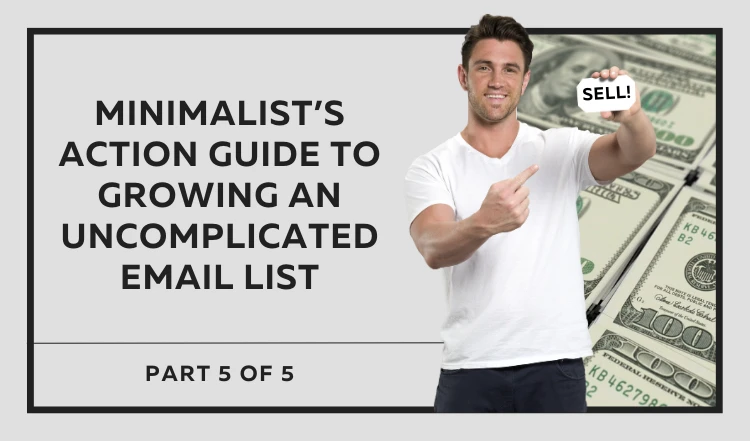Have you ever seen those catchy headlines on Facebook that make you click because you just must know what they’re talking about? You know, the ones like “She adds this to a box of crushed Triscuits, and I’m drooling!” They work so well because they leave you wondering what “this” is, and you just must find out.
What amazing, but recognizable, ingredient did she add to those crushed Triscuits?
We have to know!
You can use the same technique to create enticing email subject lines that will get your subscribers to open your emails. Instead of giving away everything in the subject line, leave it a little ambiguous and use words like “this” to create curiosity and make them want to click.
One of the most actively clicked subject lines is simply “Did you see this?” It’s short, sweet, and it creates that sense of mystery that makes people want to know more. It’s among the most effective ways to increase open rates.
Of course, once you get that click or that open, you need to deliver. If you don’t deliver, you are officially clickbait, so make sure whatever comes after your ambiguous subject line can back it up.
If you’re looking for other great examples of ambiguous subject lines, try checking out the news headlines on Facebook, Buzzfeed, Fox News, etc. Those people are masters at getting you to click and read more, so take a page from their book and create some enticing subject lines for your emails!
The Science of Ambiguous Headlines: How They Trigger Our Brains and Get Us to Click
Ambiguous subject lines work so well from a psychological point of view because they tap into our natural human curiosity. Our brains are wired to seek out new information and experiences, and when we’re presented with something that piques our interest, we can’t help but want to know more.
When it comes to email subject lines, studies have shown that using a bit of mystery can significantly increase open rates. For example, a study conducted by AWeber found that subject lines that were intriguing and left something to the imagination had a 22% higher open rate than those that were straightforward and to the point.
Another study by MailChimp found that subject lines that were either straightforward or had a clear benefit had lower open rates than those that were a bit more ambiguous. In fact, subject lines that were funny or contained wordplay had some of the highest open rates of all.
One reason why ambiguous subject lines work so well is that they create a sense of urgency and FOMO (fear of missing out) in the reader. When we’re not sure what the email is about, we worry that we might be missing out on something important or exciting. This fear of missing out can be a powerful motivator that drives us to open the email.
Additionally, ambiguous subject lines can be useful in situations where you don’t want to give away too much information upfront. For example, if you’re promoting a sale or discount, you might want to create a subject line that hints at the offer without giving away all the details. This can create anticipation and build excitement for the reader, which can lead to more clicks and conversions.
Ambiguous subject lines work so well from a psychological point of view because they tap into our natural curiosity and create a sense of urgency and FOMO. Studies have shown that subject lines that leave something to the imagination have higher open rates than those that are straightforward, so if you’re looking to boost your email marketing efforts, it might be worth giving them a try!

Quick Advertising History Lesson
The phrase “hang a lantern on your title” means to draw attention to the title of your article or piece of content in a way that creates curiosity or interest. It comes from the idea of hanging a lantern outside your house to guide people in the dark, and in this context, it means to use your headline to guide readers into your content.
In marketing and advertising, the goal of a headline is to grab the reader’s attention and entice them to read more. By “hanging a lantern” on your title, you’re making it clear to your audience that there’s something interesting, valuable, or mysterious waiting for them inside the content.
David Ogilvy, who is often referred to as the father of advertising, famously said that the job of the headline is to get the first sentence read. In other words, if you can capture the reader’s attention with your headline, you’re more likely to keep them engaged throughout the rest of the content.
Top 37 Ambiguous Email Subject Lines With The Highest Open & Click Rates
- Did you see this?
- It’s here?
- Did you forget?
- It’s today (or tomorrow or whatever day) It ends tonight
- Did you miss it? OR Did you miss these? Did you get this?
- Have you seen this?
- Are you sure?
- I think you missed this …
- Can you relate?
- Here it is …
- Is this you?
- Have you decided?
- I picked these just for you
- Does this stress you?
- Hey!
- One more for you…
- Does this happen to you?
- Should you …
- Should you make this change?
- Please put us out of our misery
- I want to make sure you received this
- Did you still want this?
- Quick question
- The secret to XXX
- Do you hate me?
- Something new, just for you (You’re Really Going To Want To Read This One)” Can you guide me? OR Can you help me?
- Does this help?
- Have you tried this?
- Is this you?
- Here’s the solution I came up with
- How do you do it?
- Who knew this was so controversial?
- How are you?
- If I offended you
In today’s fast-paced digital world, it’s more important than ever to capture your audience’s attention quickly and effectively. Using ambiguous subject lines and headlines is one way to do just that. By creating a sense of curiosity and intrigue, you can entice your readers to open your emails, click through to your content, and engage with your brand.
However, it’s important to strike a balance between ambiguity and clarity. While it’s great to pique your readers’ interest, you don’t want to mislead or disappoint them with content that doesn’t live up to the hype. So, make sure that your subject lines and headlines accurately reflect the content that follows.
Remember, the ultimate goal is to provide value to your audience. If you can combine the power of ambiguity with valuable content that meets their needs and interests, you’ll be well on your way to building a loyal following and achieving your marketing goals.





